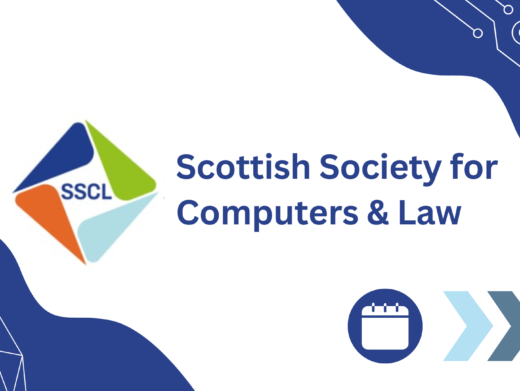The space industry has been undergoing a revolution over the past few decades. A sustained program of human spaceflight and space development initiatives has emerged involving a number of new aerospace companies and ventures seeking to develop faster, better and cheaper access to space and spaceflight technologies. This has led many to describe us as now living in a new space age which has been coined “Space 2.0”.
Space 2.0 presents a whole host of exciting new possibilities from establishing a permanent habitat on the moon, asteroid mining, space tourism and missions to Mars through to significant developments in satellite communications (the latter being the focus of this article).
In the satellite communications market, there are a number of established companies such as Inmarsat, Eutelsat, Iridium, EchoStar and SES (amongst others) that each have their own proprietary constellations of satellites operating in different orbits, using various spectrum bands to supply often competing services (such as maritime navigation, radio, TV, GPS or satellite telecommunications). Traditional communications satellite programs often take three to four years to build and launch so the pace of development has been fairly slow and steady. Until now.
Just last month OneWeb (a satellite communications company which has raised $3.4 billion from the likes of Arianespace, Airbus, Qualcomm, Virgin and Hughes) launched the first six (in one launch) of a planned 650 satellites into low earth orbit to provide broadband services globally. In January of this year, Elon Musk said he was planning to introduce a broadband satellite constellation of up to 4,000 satellites. Both of these constellations would dwarf those of any existing companies (in terms of satellite numbers but not necessarily capacity). Other satellite operators are launching High Throughput Satellites (HTS) or are addressing capacity requirements with supplementary satellites where they are needed. So what’s going on?
There are a number of reasons for this disruption.
Growth of the private sector. Historically the space sector was largely restricted to governments, however private companies, building on the past successes of governments and non-governmental organisations, have been entering this domain in increasing numbers and many of them have deep pockets. This has also been driven in part by the U.S. government’s reduction in funding for NASA and encouragement of private enterprise to step into that space to fill the gap.
Reduced costs. These new market entrants are looking to revolutionise space technology: the likes of Elon Musk’s SpaceX and Jeff Bezos’ Blue Origin companies have both successfully developed space launch vehicles which can take off and land vertically and be reused for further missions. According to SpaceX this could result in circa 30% of costs savings which is significant when the list price for a Falcon 9 launch is around $62 million). (By the way if you haven’t seen a vertical landing of a SpaceX rocket on a drone ship in the Atlantic I would urge you to make your way over to YouTube!)
Advances in technology. Advances in technology are not restricted to the launch sector either. There is an increasing proliferation of smaller satellites (microsats, nanosats, picosats and femtosats are all types of smaller satellites named according to their weights) which have faster innovation and deployment cycles and which are considerably cheaper than their larger cousins (hundreds of thousands rather than tens of millions) and have the potential to provide differentiated services. Other notable projects include Google’s Project Loon which is building a network of balloons made of sheets of polyethylene designed to move with stratospheric winds and bring connectivity to rural and remote areas of the globe.
Increased data rates. Advances in technology are also resulting in faster data rates. For instance Inmarsat’s new European Aviation Network will be capable of delivering over 75 Mbit/s connection speed to aircraft over Europe allowing passengers to use social media, share pictures and stream high-bandwidth content at speeds they are used to experiencing at home.
The increase in satellite communication data rates, greater global coverage, reduced latency rates (mainly for satellites in medium and low earth orbits), increased competition through the introduction of new market entrants coupled with reduced access costs and other barriers to entry is all taking place at the same time that there are seismic technological advances taking place on earth which are creating an increasing demand for satellite services.
The new technologies which regularly feature in the hallowed pages of Computers & Law will be facilitated, either in the main or in part, by satellite communications networks and services including autonomous cars, autonomous shipping, in-flight broadband, IoT, autonomous farming (and any number of other things beginning with “autonomous”) as terrestrial communications networks either do not provide 100% coverage (such as ‘notspots’, areas of the country which do not have mobile network coverage) or may be absent (for example over sea or in the air).
The UK’s place in the space industry
The UK has a rich history in the space industry. There are only 12 countries worldwide with an independent capability to place satellites in orbit, including the production of the necessary launch vehicle. The rest have to rely on foreign launch services. The UK sits at 6th place in this illustrious list having launched the Prospero (or X-3) satellite in 1971 on a Black Arrow rocket developed in the UK and launched from Australia. Apparently Norfolk had been considered as a launch site but was overlooked because of the risk that the rocket might drop spent stages on an oil rig in the North Sea.
The Black Arrow project was cancelled in 1971 on economic grounds, however the UK has remained a leading figure in the space industry which is worth almost £15bn a year to the UK alone1 . The UK also currently produces 40% of all small satellites currently in orbit around Earth.
With the global space industry expected to be worth by some reports nearly $3 trillion in 30 years’ time (it is currently worth a mere $350 billion)2 the UK Space Agency (UK SA), the regulatory body responsible for the UK’s civil space programme, has committed to the goal of raising the UK’s share of the global space-enabled market from 6.5% up to 10% by 2030 .
To achieve this goal, the UK SA and partners brought together government and industry to enable satellite launches from the UK from as early as 2021, enabled in part by new legislation (see below). It is under this new framework that the UK SA believes that the UK could compete in the high-value launch market by launching an estimated 2,000 satellites by 2030.3
Regulating spaceflight in the UK
Space law has developed from the treaties and principles that were first established by the UN Committee on the Peaceful Uses of Outer Space which was formed following the Soviet Union’s launch of the world’s first satellite Sputnik in 1957.
The Outer Space Act 1986 (OSA) enshrines the UK’s obligations under those various international treaties and regulates activities in outer space carried out by organisations or individuals established in the UK.
This legislation is now supplemented by the Space Industry Act 2018 (SIA) which makes provision for spaceflight activities from the UK and came into force in March 2018. It means that that the OSA will now only apply to space activities carried out by UK entities overseas while the SIA will govern all space activities carried out from the UK. This includes the licencing of any launch, procurement of launch, operation or return of vehicles capable of operating above the stratosphere (approx. 50km) and any activities taking place above the stratosphere, including operation of a satellite from the ground along with the licensing of any balloon capable of operating within the stratosphere with people aboard and operation of spaceports and range control services. The key activities are divided as follows:
| Activity | Outer Space Act 1986 | Space Industry Act 2018 | ||
|---|---|---|---|---|
| Procurement of launch | In-orbit operations | Procurement of launch | In-orbit operations | |
| UK entity procuring a UK launch for a satellite | X | |||
| UK entity operating a satellite from the UK | X | |||
| UK entity procuring an overseas launch for a satellite | X | |||
| UK entity operating a satellite from overseas | X | |||
| Foreign entity procuring a UK launch for a satellite | X | |||
| Foreign entity operating a satellite from the UK | X |
The UK’s space industry is regulated by the UK SA and the Civil Aviation Authority (CAA). The UK SA regulates all rockets (whether sub-orbital or orbital), vertical launch spaceports and associated range control. The CAA regulates sub-orbital spaceports and balloons, associated spaceports and range control, along with airspace and carrier craft.
Not only is the regulatory framework already in place, but a list of potential UK spaceports has already been drawn up (see picture below) and over £31.5 million in grant funding has been made available to help establish launch services from Sutherland in Scotland with a further £2 million fund being proposed to help horizontal spaceports build the market for small satellite launch and sub-orbital flight.?4
The vision
The UK is the first country to pass modern spaceflight legislation, commence work on modern spaceflight regulation and to offer open market incentives5 which are all intended to help establish a UK launch market. The result of these activities could well see satellite launches taking place from UK soil as early as 2021 with the UK paving the way for the creation, adoption and roll-out of revolutionary technologies for future space technologies and services. There are certainly potential costs savings, removal of export control issues and simplifications in logistics alone if the 40% of global small satellites produced in the UK could be launched from its own shores.
And where could it lead us? One could well imagine a scene where in the not too distant future you leave your house to jump into an autonomous car which takes you to the nearest Uber Skyport to get on an electric VTOL (vertical take-off and landing) then flying over the English countryside (which is being farmed autonomously) to arrive in Sutherland for your suborbital trip into space. All enabled by new constellations of low, medium and geosynchronous orbiting satellites developed, launched and operated from the UK.
_________________
Notes
1. London Economics Size & Health of the UK Space Industry 2018 Report to the UK Space Agency (https://www.gov.uk/government/publications/uk-space-industry-size-and-health-report-2018)
2. BofAML Global Research https://www.cnbc.com/2017/10/31/the-space-industry-will-be-worth-nearly-3-trillion-in-30-years-bank-of-america-predicts.html
3. https://assets.publishing.service.gov.uk/government/uploads/system/uploads/attachment_data/file/298362/igs-action-plan.pdf
4. Image available at https://www.gov.uk/guidance/how-we-are-promoting-and-regulating-spaceflight-from-the-uk and contains public sector information licensed under the Open Government Licence v3.0.
5. https://assets.publishing.service.gov.uk/government/uploads/system/uploads/attachment_data/file/725556/LaunchUK_-_Spaceflight_Guide__1_.PDF
Christian Fahey is a Vice President of Legal Affairs at mobile satellite communications company Inmarsat Plc.




